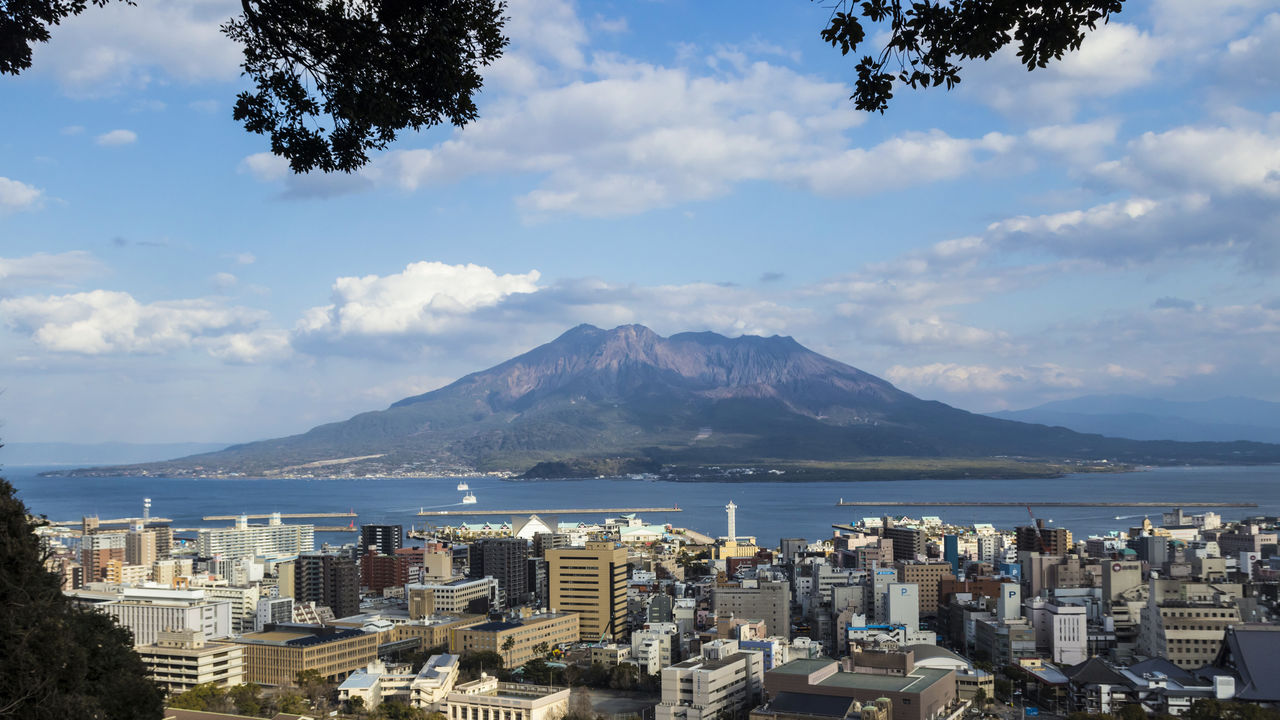
Sakurajima, Kagoshima: One of the World’s Most Active Volcanos
Guideto Japan
- English
- 日本語
- 简体字
- 繁體字
- Français
- Español
- العربية
- Русский
City in the Shadow of the Volcano
Rising up from Kagoshima Bay, the peaks of Sakurajima form the dramatic backdrop to the city of Kagoshima, just 4 kilometers away. The island—technically a peninsula since a lava flow in a 1914 eruption connected it to the Ōsumi Peninsula—is 52 kilometers in circumference. Sakurajima is inhabited by around 4,500 people despite being the site of one of the world’s most active volcanos.
Although Sakurajima appears to be a single mountain, it is in fact a composite volcano that stretches from the southern peak of Minamidake to the highest peak of Kitadake in the north, whose summit reaches a height of 1,117 meters. The present shape of the island is the result of 17 major eruptions that have occurred since its initial formation 26,000 years ago.
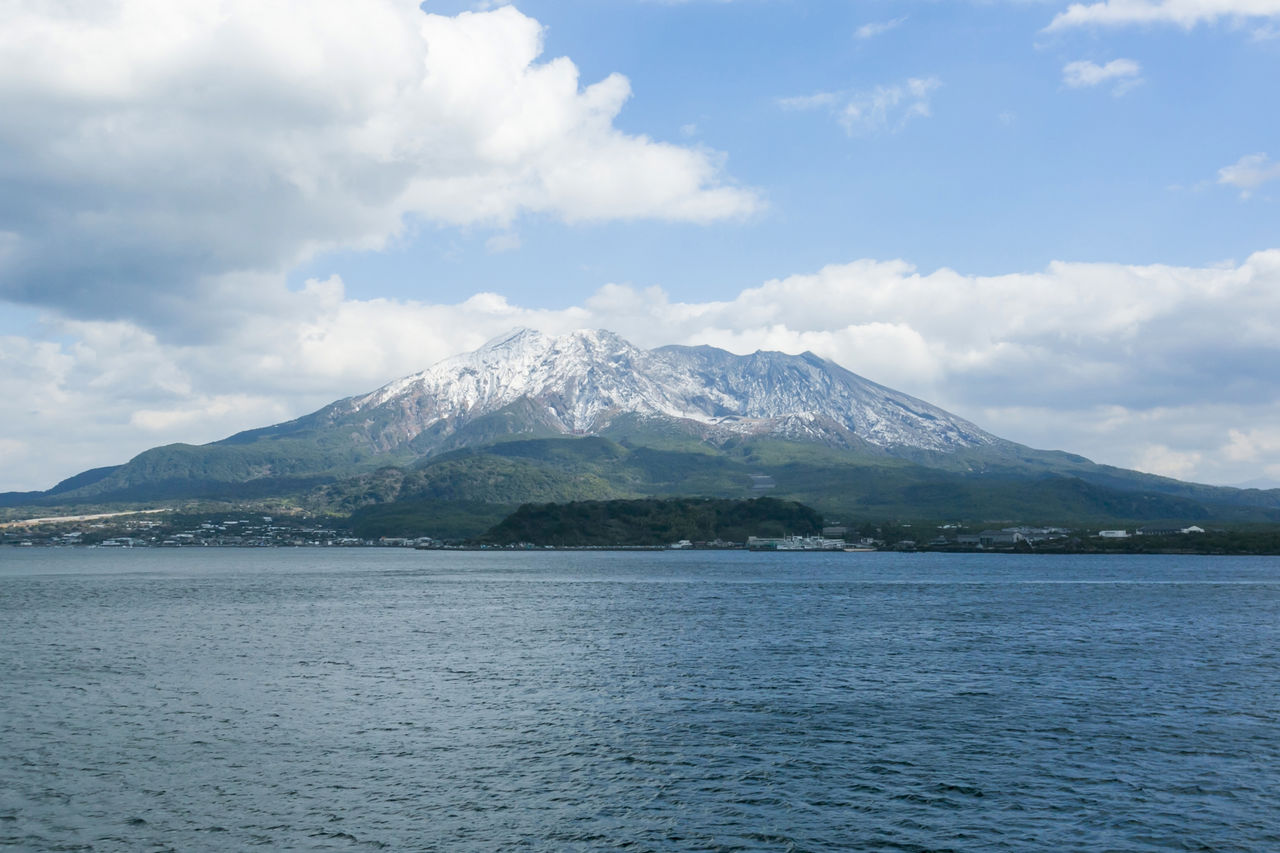 The full breadth of Sakurajima seen from the city of Kagoshima.
The full breadth of Sakurajima seen from the city of Kagoshima.
Minor eruptions are an almost daily occurrence on Sakurajima, and at times low rumblings or explosive sounds can be heard. In 2017, volcanic smoke rose from Sakurajima’s craters over a thousand times and there were 406 eruptions, of which 81 were registered as “explosive eruptions” accompanied by tremors and the projection of volcanic rock.
This volcanic activity is just another part of everyday life for people in the surrounding area, including the 600,000 residents of Kagoshima City. Few cities of comparable size elsewhere in the world are located so close to an active volcano.
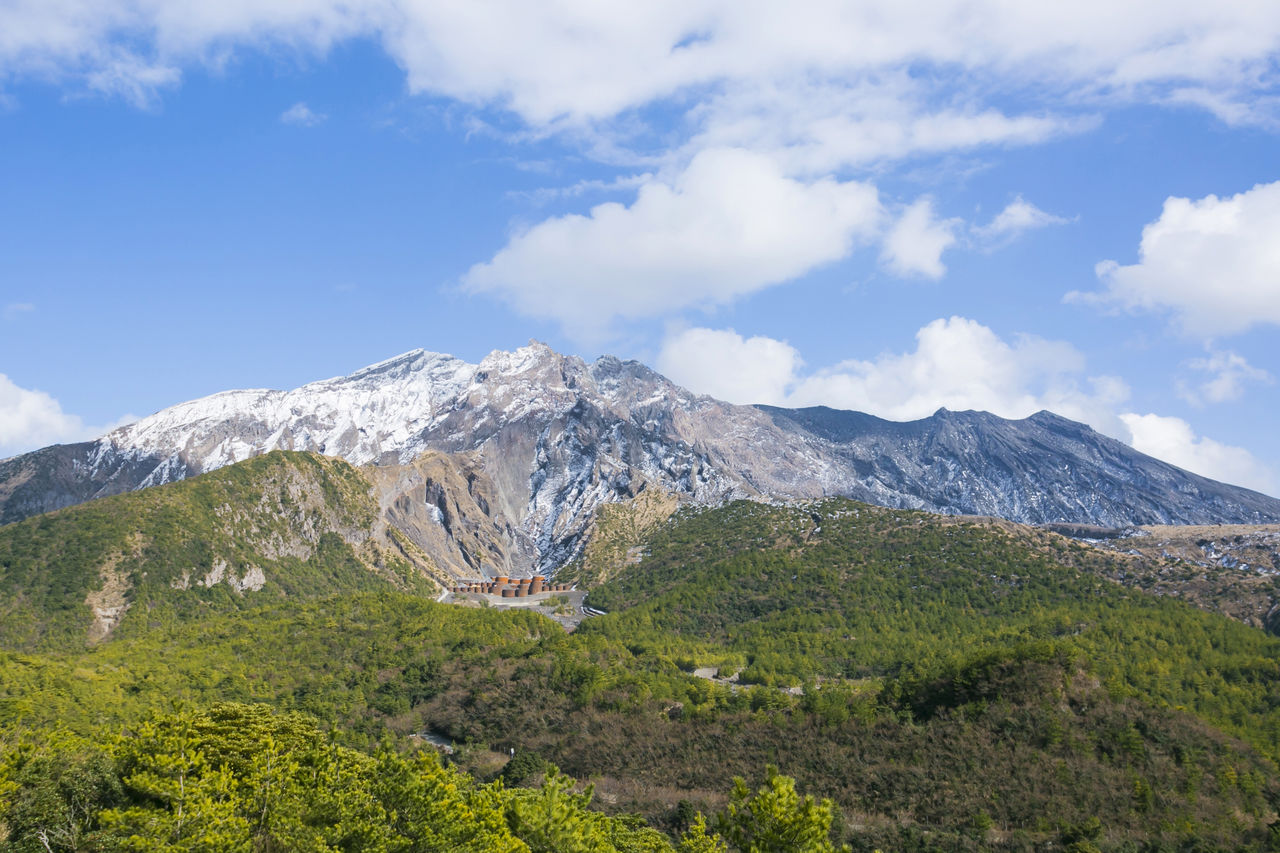 The area of Sakurajima has been designated as a National Geopark.
The area of Sakurajima has been designated as a National Geopark.
Several spots throughout Kagoshima offer scenic views of Sakurajima. One of the most popular is the 107-meter-high hill named Shiroyama, located in the heart of the city. Shiroyama is famous as the site where Saigō Takamori met his demise in the culminating battle of the Satsuma Rebellion, which pitted the local forces he led against the army of the central Meiji government. The view from the top of the hill is captivating, with the city stretching out in all directions and Sakurajima standing majestically on the other side of the bay.
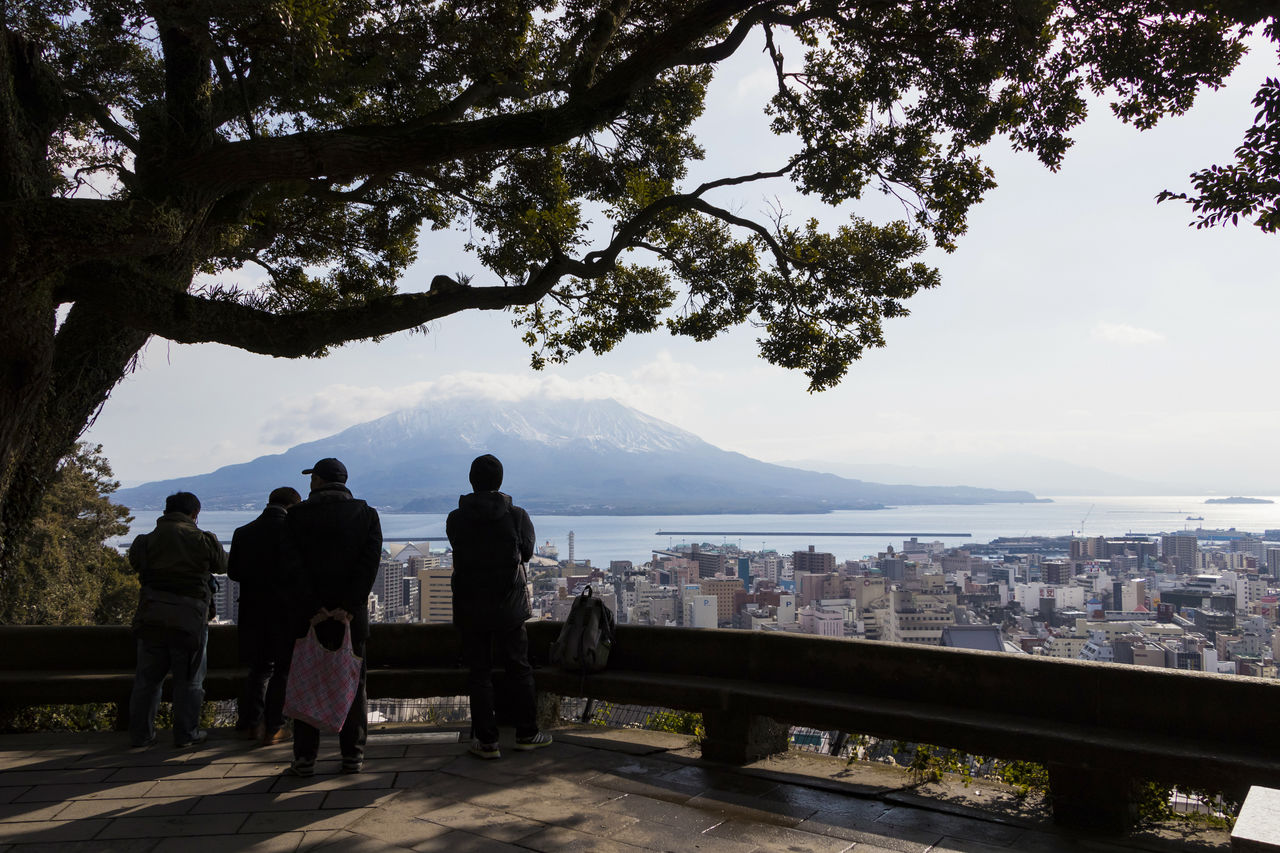 The scenic view from the observation point atop Shiroyama.
The scenic view from the observation point atop Shiroyama.
Experience the Beauty Aboard the Sakurajima Ferry
The convenient Sakurajima Ferry service, operating 24 hours a day, links Kagoshima to Sakurajima. During the peak daytime hours, ferries depart every 10 to 15 minutes. The passenger fee, just ¥160 and only ¥80 for children up to elementary-school age, is paid upon exiting the ferry, with no need to purchase a ticket in advance.
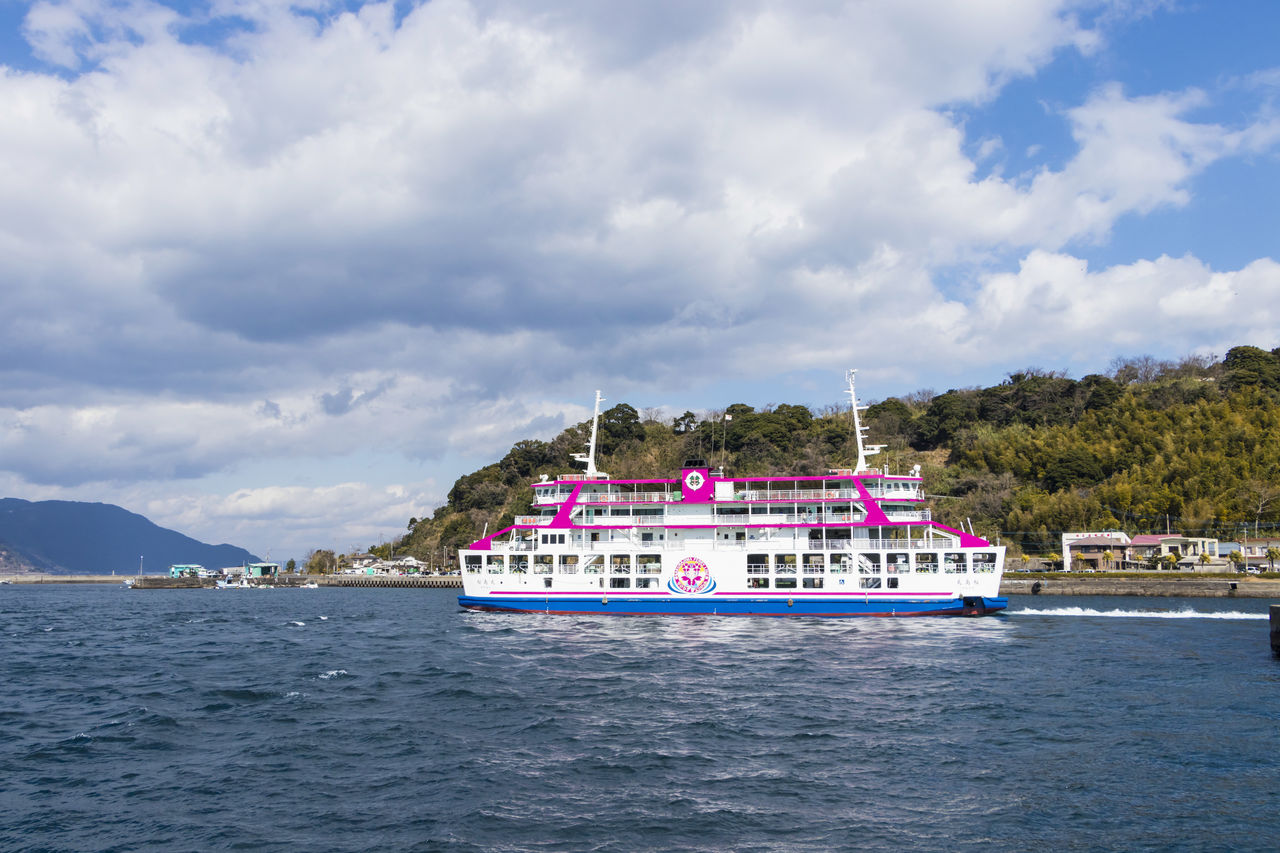 The Sakurajima Ferry runs back and forth between Sakurajima and Kagoshima 140 times a day. Many use the service to commute to work or school.
The Sakurajima Ferry runs back and forth between Sakurajima and Kagoshima 140 times a day. Many use the service to commute to work or school.
During the brief 15-minute ferry trip passengers can enjoy the view of Sakurajima and the surrounding bay. “On some days passengers are also lucky enough to see groups of dolphins swimming along in the bay,” points out Masuyama Kaori, who works for the Kagoshima City Ship Department that operates the Sakurajima Ferry. As a regular passenger who rides the ferry to her office in Sakurajima Port every day, she can view Sakurajima throughout the year and at different times of the day. Above all, she recommends riding the ferry around twilight, when the light from the setting sun tinges the volcano in a fantastic red glow.
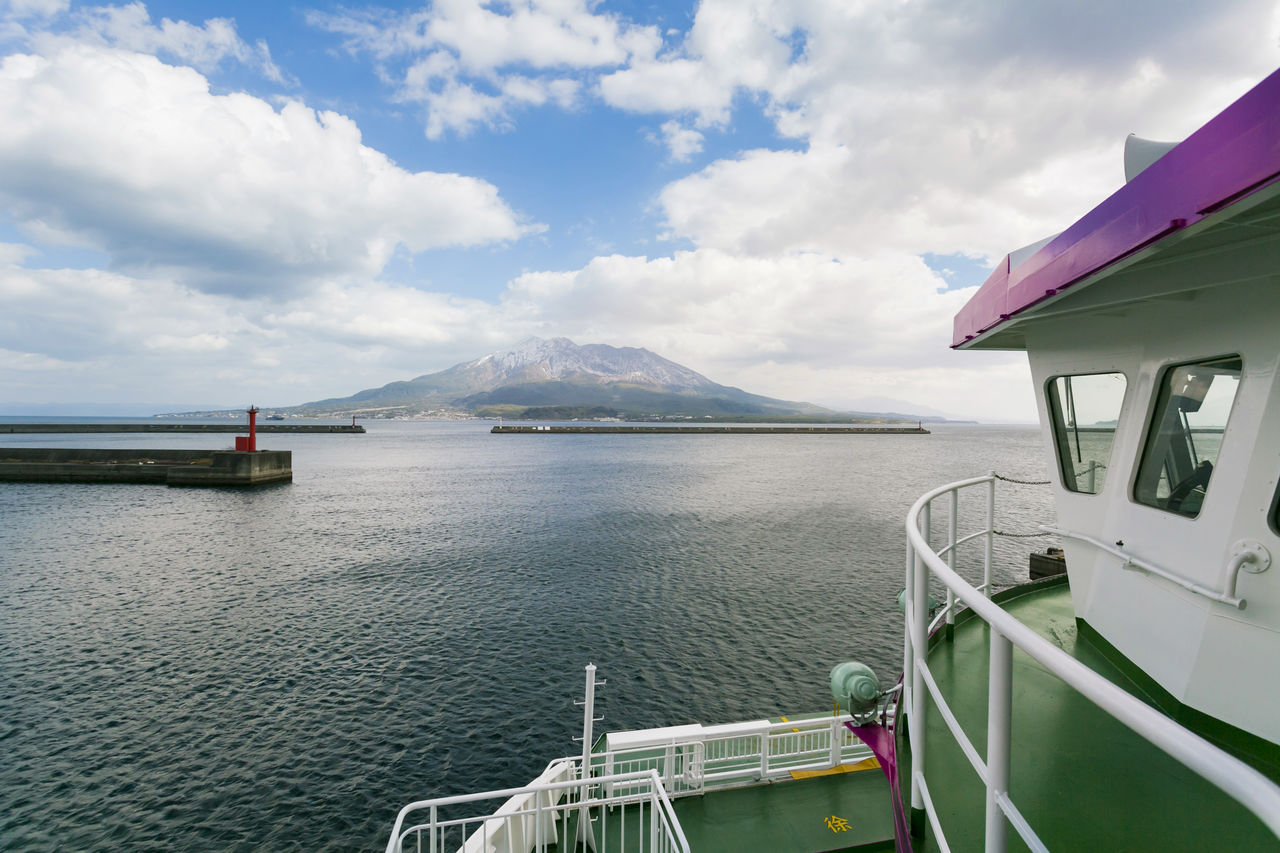 The ferry departing Kagoshima Port for the 15-minute trip to Sakurajima.
The ferry departing Kagoshima Port for the 15-minute trip to Sakurajima.
Once a day the Yorimichi Cruise also runs from Kagoshima to Sakurajima. The 50-minute cruise, which costs ¥500 for adults and ¥250 for children, takes a more meandering route than the normal ferry service, traveling far south in the bay before heading back up toward Sakurajima. The ship passes by the Kanze Lighthouse rising up from the bay and the uninhabited island Okogashima, as well as offering a view of the Taishō Lava Field that was formed by the 1914 eruption. Taking the cruise is a way to fully appreciate the stunning beauty of the bay and Sakurajima.
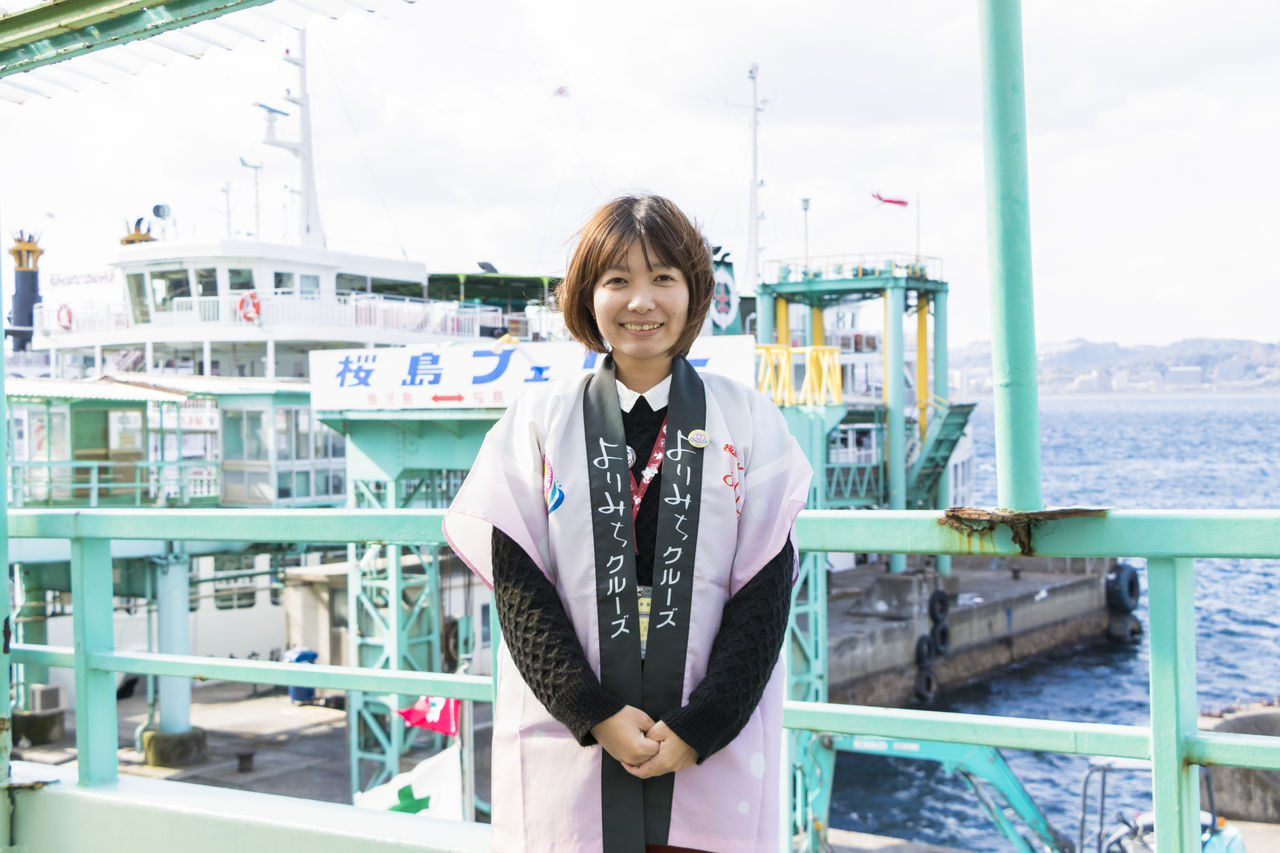 The Kagoshima City Ship Department’s Masuyama Kaori recommends that visitors take the Yorimichi Cruise to enjoy the area’s natural beauty at a more leisurely pace.
The Kagoshima City Ship Department’s Masuyama Kaori recommends that visitors take the Yorimichi Cruise to enjoy the area’s natural beauty at a more leisurely pace.
Upon arriving at the port in Sakurajima, visitors are advised to stop by the Sakurajima Visitor Center to pick up some information about the local sights. Along with various tourist brochures, the center has displays that offer clear explanations of the history and mechanisms of the mountain’s eruptions.
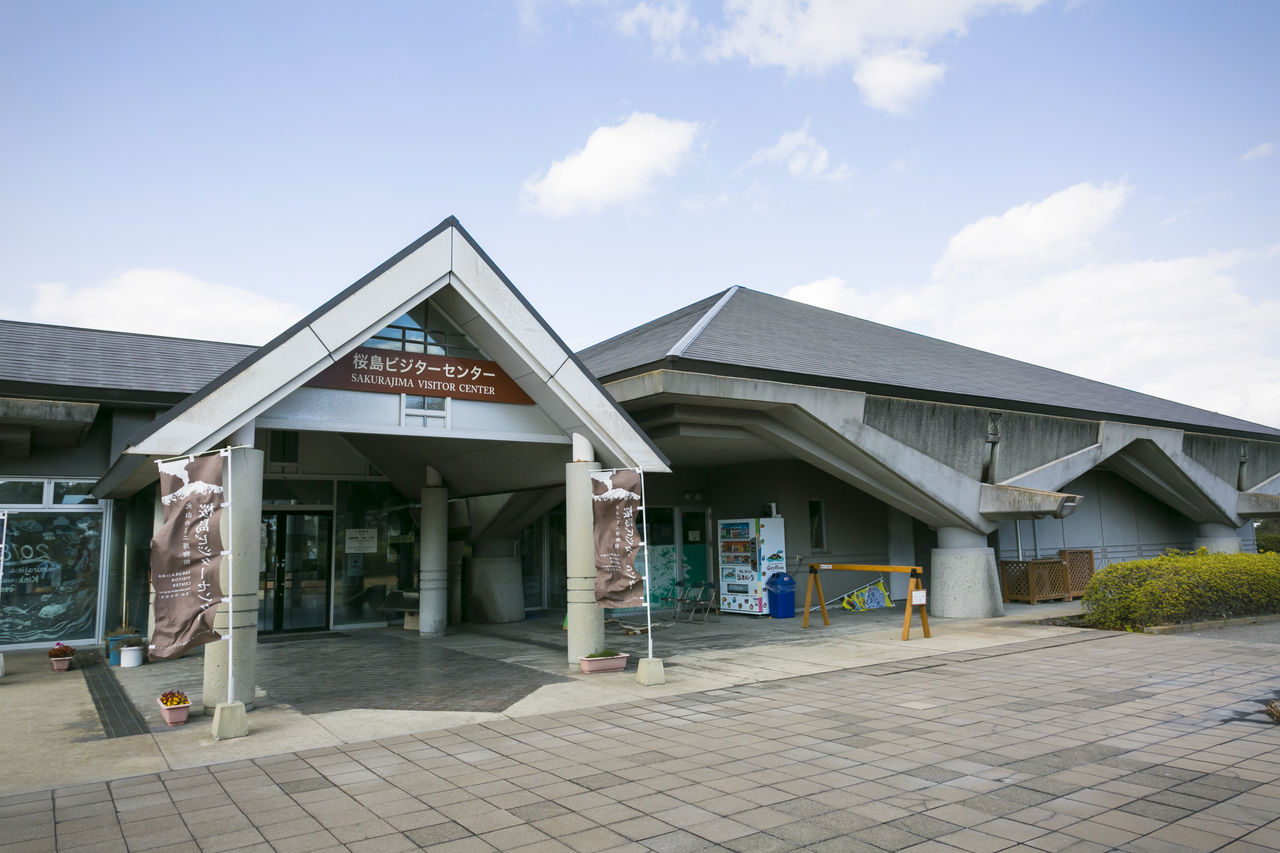 Stop by the Sakurajima Visitor Center to pick up useful information.
Stop by the Sakurajima Visitor Center to pick up useful information.
One of the attractions is a large-screen display that combines video images with realistic sound-effects to give viewers a sense of witnessing an actual eruption. With its various panel displays and models, as well as a mini-theater for informational films, the center offers visitors many fun ways to learn more about Sakurajima.
 The large wrap-around display and sound effects at the Sakurajima Visitor Center re-create the experience of an actual eruption.
The large wrap-around display and sound effects at the Sakurajima Visitor Center re-create the experience of an actual eruption.
The Natural Bounty of Eruptions
From the Visitor Center, many people opt to take a short break at the nearby Sakurajima Yōgan Nagisa Park, a scenic spot that offers views of Sakurajima, the bay, and Kagoshima. A 100-meter-long foot bath in the park is filled with reddish-brown hot-spring water that gushes up from 1,000 meters beneath the ground. People who stop by can soak their feet while leisurely taking in the scenic views.
 The footbath in Sakurajima Yōgan Nagisa Park lies right next to Kagoshima Bay.
The footbath in Sakurajima Yōgan Nagisa Park lies right next to Kagoshima Bay.
The highest viewing area on Sakurajima is the Yunohira Observatory at the fourth station of Kitadake. This is good place to take a break and get a closer view of the crater. The views of the nearby desolate mountain surface are sure to leave a lasting impression.
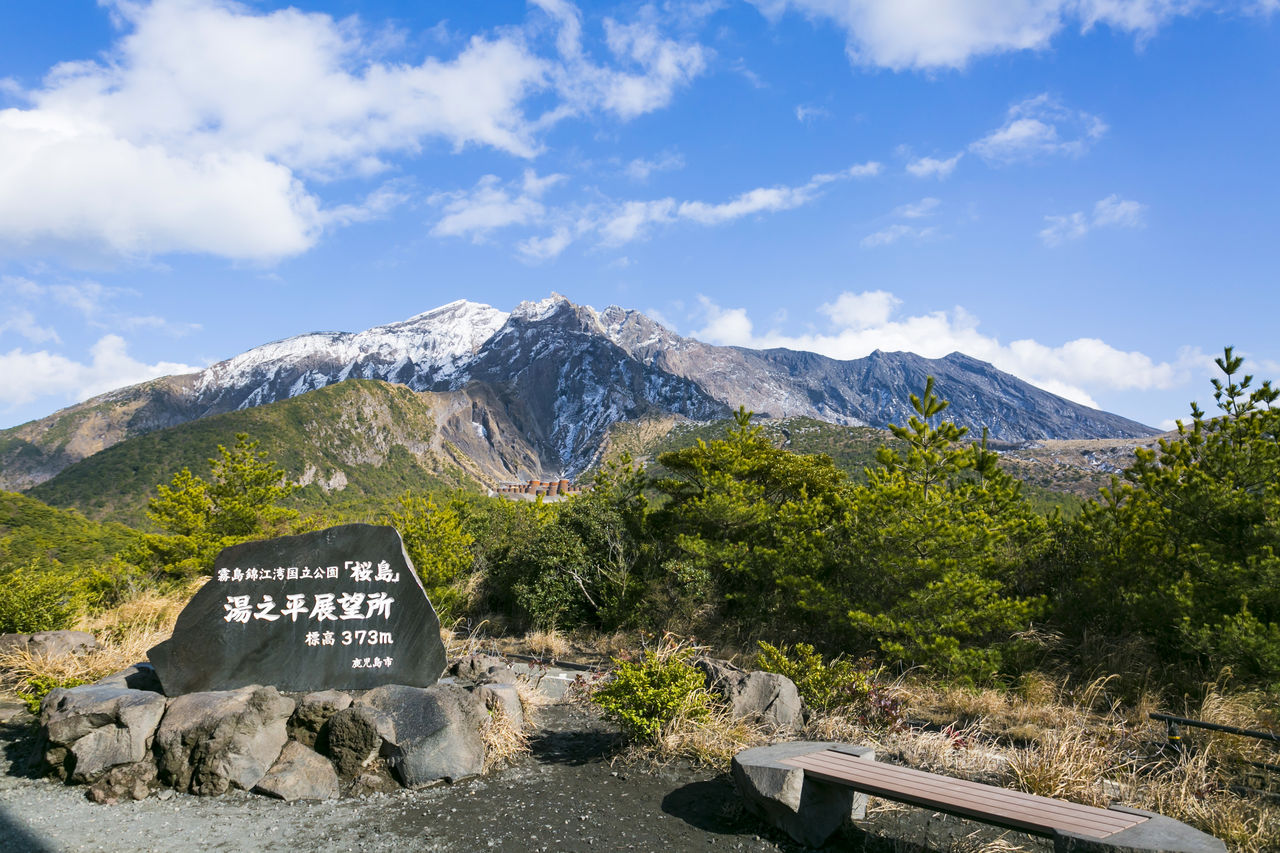 The Yunohira Observatory at the fourth station, 373 meters up the slope of Kitadake.
The Yunohira Observatory at the fourth station, 373 meters up the slope of Kitadake.
From the observation point, a panoramic 360-degree view that includes Kitadake, Kagoshima across the bay, and the Ōsumi Peninsula in the far distance. On clear days the view stretches out as far as the peak of Kaimondake on the southern tip of the Satsuma Peninsula, known as the “Mount Fuji of Satsuma” for sharing the shape of its larger namesake. The view of the volcano is particularly breathtaking at dusk, with the sun setting behind the peninsula to the west of Sakurajima.
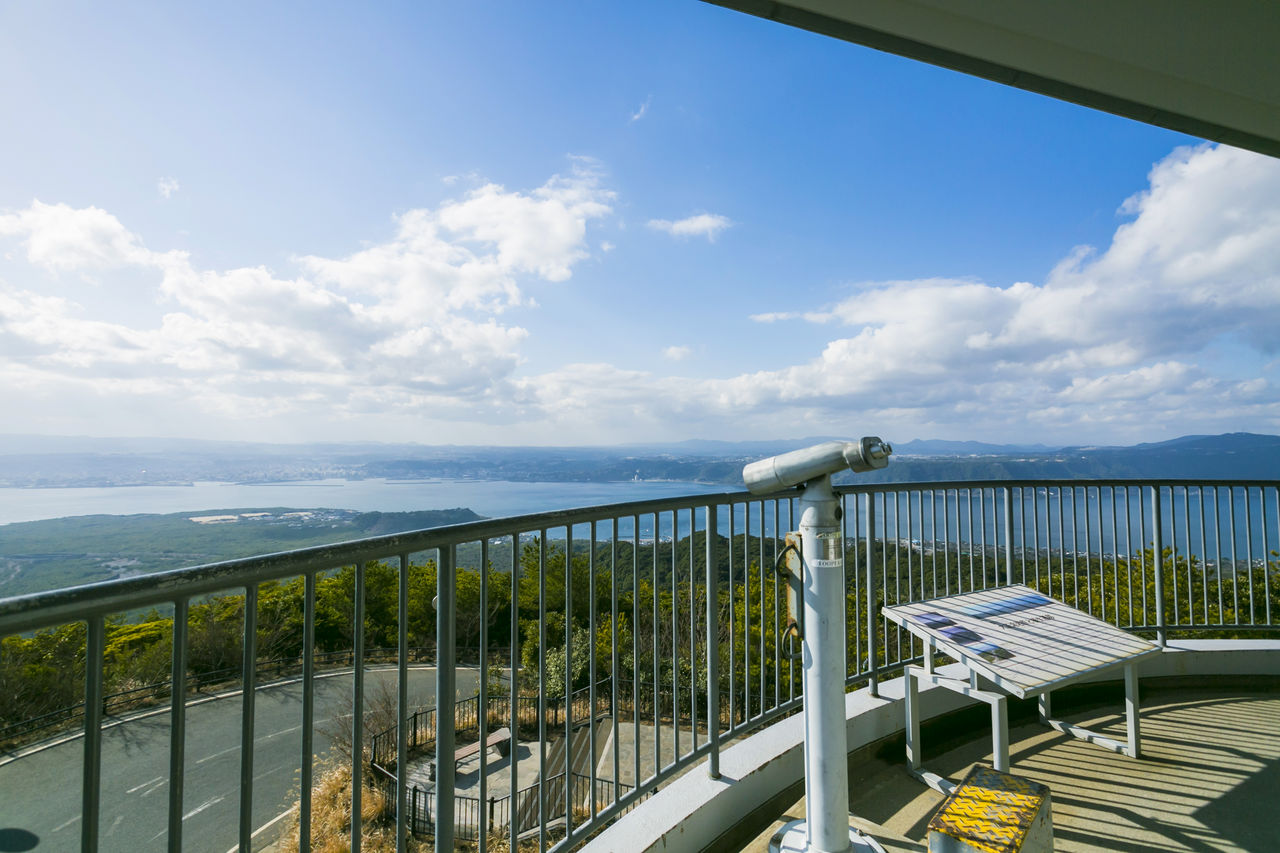 Kagoshima as viewed from Yunohira Observatory.
Kagoshima as viewed from Yunohira Observatory.
Sakurajima is said to have been inhabited since the prehistoric Jōmon period. Despite the risks from eruptions, inhabitants seem to have chosen the area for its temperate climate and fertile volcanic soil. The well-drained land also makes the area ideal for growing fruits and vegetables. Some of the outstanding local produce includes the Sakurajima daikon, which set a Guinness World Record as the heaviest daikon radish in the world, and the Sakurajima komikan, a small mandarin with a very sweet flavor.
 The popular and refreshingly sweet Sakurajima komikan soft-serve ice cream sold at the Sakurajima Roadside Station. During the winter season, visitors can purchase Sakurajima komikan mandarins and Sakurajima daikon radishes at the station.
The popular and refreshingly sweet Sakurajima komikan soft-serve ice cream sold at the Sakurajima Roadside Station. During the winter season, visitors can purchase Sakurajima komikan mandarins and Sakurajima daikon radishes at the station.
(Originally written in Japanese by Satō Fumi; photographs by Kusano Seiichirō. Banner photo: A view of Sakurajima from the Shiroyama observatory.)